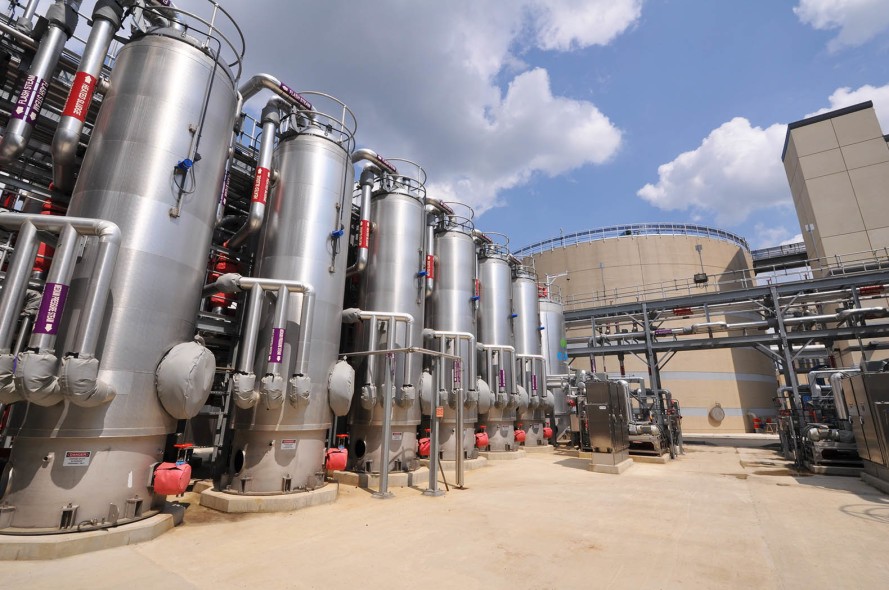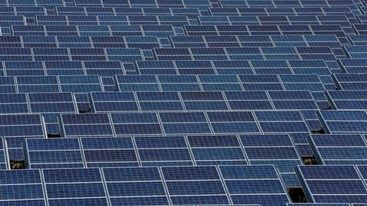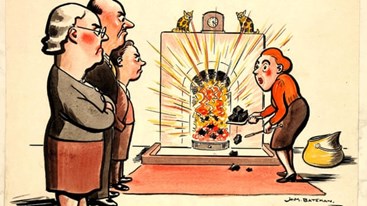Thursday, 25/04/2024 | 23:32 GMT+7
The District of Columbia Water and Sewer Authority just unveiled a new $470 million waste-to-energy system that converts solid sludge – otherwise known as human poop – into clean, renewable energy. D.C. Water is the first utility in North America to use a Norwegian thermal hydrolysis system in an urban treatment plant, and according to officials, the waste-to-energy system is the largest in the world.
Norwegian company Cambi AS built the thermal hydrolysis system for D.C. Water that uses “pressure cooker” or “steam explosion” technology. The process combines high heat and pressure to pressure cook the solids at the end of the wastewater treatment process, making the biosolids more biodegradable, improving digestion performance in the four concrete 80-foot high anaerobic digesters. The methane is captured and fed to three jet engine-sized turbines to produce clean, renewable power.

“This project embodies a shift from treating used water as waste to leveraging it as a resource,” D.C. Water CEO and General Manager George S. Hawkins said in a statement. “We are proud to be the first to bring this innovation to North America for the benefit of our ratepayers, the industry and the environment.”
Since starting up in September, the system has been producing a net 10 megawatts of electricity from the waste treatment process, enough to provide a third of the power for the 157-acre Blue Plains Advanced Wastewater Treatment Plant. The wastewater treatment plant is the largest of its kind in the world, with a capacity of 370 million gallons per day, and is the largest consumer of electricity in the nation’s capital. The waste-to-energy system is expected to save about $10 million annually on the power bill and will cut carbon emissions from the plant by one-third.
Mai Linh (theo Inhabitat)








.jpg?w=367&h=206&mode=crop) Energy efficiency and conservation usage is an important aspect of the national energy development strategy
05/03/2024
Energy efficiency and conservation usage is an important aspect of the national energy development strategy
05/03/2024
 Vietnam - Denmark promote cooperation in the energy sector
Vietnam - Denmark promote cooperation in the energy sector
 Challenges and Opportunities to promote energy efficiency market in Vietnam
Challenges and Opportunities to promote energy efficiency market in Vietnam
 The Ministry of Industry and Trade requests government agencies to coordinate in organizing Earth Hour 2024
The Ministry of Industry and Trade requests government agencies to coordinate in organizing Earth Hour 2024
 Consultation on Energy Efficiency Boiler Catalogue and Wood Drying Guideline
Consultation on Energy Efficiency Boiler Catalogue and Wood Drying Guideline
 Son Ha Co., Ltd, applies energy efficiency and conservation measures
Son Ha Co., Ltd, applies energy efficiency and conservation measures
.png?w=367&h=206&mode=crop) Request for expression of interest - C2.1.13: Capacity Building on energy efficiency policies development
Request for expression of interest - C2.1.13: Capacity Building on energy efficiency policies development
 Phuc Kien Co., Ltd., is effectively implementing energy-saving measures
Phuc Kien Co., Ltd., is effectively implementing energy-saving measures